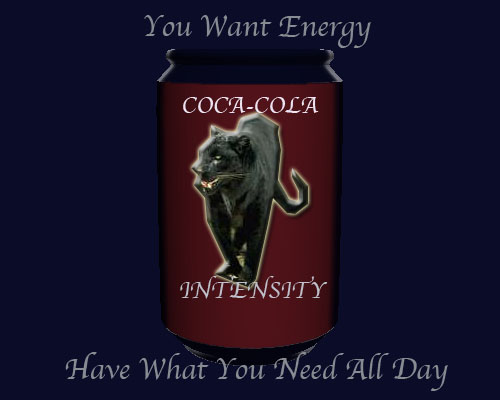Saturday, May 29, 2010
BRAND POSITIONING
Tuesday, May 25, 2010
The Message
The message was clear in the ad for Coca Cola’s “It’s the real thing”. Coca Cola wanted to show unity among people but not just in the United States, but all over the world. The commercial starts out with a single person singing and then she is joined by others. These other people are dressed in traditional attire and they are all different nationalities. The company wanted to show unity and harmony with everyone. It also made Americans look compassionate about the rest of the world. Coca Cola’s approach was that they wanted to be different then their competitors and they did just that by involving the world. The message was heard by all, this became one of the most memorable Coca Cola commercials ever.
What was the unique about the campaign?

Because the New Seekers were initially unavailable to record the new version, a group calling itself the Hillside Singers recorded it with a country-and-western flavor and released it as a single. When the New Seekers began an American tour several weeks latter, they re-recorded the new lyrics and released a second single. Both version sold well in fact, at one point, the New Seekers version was listed among the top ten songs on the American pop music charts while the Hillside Singers version was number thirteen. Such successes were repeated around the world as the ad's popularity expanded. Recordings of the song and versions of the sheet music appeared in a variety of languages to fill an ever-increasing demand.
"I'd Like to Buy the World a Coke" has had a lasting connection with the viewing public. Advertising surveys consistently identify it as one of the best commercials of all time, and the sheet music continues to sell more than thirty years after the song was written. Such is the power of television advertising that through the enduring popularity of this ad, at least, Coke has borne out something of Backer's ambitious claims for it, becoming a common connection among people.
Monday, May 24, 2010
The Industry Situation of the 70's

There was a dip in soft drink sales for a few years after the ban of cyclamate in 1969. Cyclamate was the common sweetening agent used in soft drinks. Because of the ban on cyclamate, Pepsi-Cola launched Pepsi-Light using saccharin as their sweetener but quickly fizzled out as high fructose corn syrup was introduced in 1974. The introduction of high fructose corn syrup came at a time when sugar prices were incredibly high, making HFCS the best alternative as a sweetener.
Like many industries during the 1970's, the soft drink industry was also hurt by the economic depression. Private label soft drinks made a small peak of sales in 1972 but slowly drifted downward after that. Larger national brands used value-packaging in returnable containers as well as other packaging innovations to help boost sales.
The Creative Strategy
Coca Cola started receiving competition from Pepsi Cola Inc. in the 1960's and wanted to differentiate its brand in subtle ways. The slogan was "It's the real thing". This suggested that Pepsi Cola was a fake.
Target Audience & Insights:
Their target audience was no longer the wealthy but everyone. They noticed that there was a need for peace and unity within the United States and around the world.
Brand Position:
Coca Cola is the brand of America but it's also the brand of the people. The color, the taste, and the bottle are all extensions of what it means to be American.
Communication Objectives:
Coca Cola is the drink for everyone. They want the different consumer markets to have a sense of community in relation to the drink. It's a drink that completes the family. They wanted the world to have hope for the future and forget about their problems so they assembled young people from all over the world holding Coke and singing together.
Proposition and Selling Idea:
To have catchy jingles that will motivate people around the world to pick up a Coke.
Media Considerations:
There were time slots bought for television and radio. They also decided on who would be on the commercials.
Creative Directions:
They got a variety of artists from the R&B and Pop genres to come together and write a song for the commercials. The words were simple and fun.
Wednesday, May 12, 2010
Taking down the copy cats

Coca Cola slogans of the 1970's
1971 I’d like to buy the world a Coke
1975 Look up America
1976 Coke adds life
1979 Have a Coke and a Smile

Coca Cola Target Market
The company's beverages are generally for all consumers. However, there are some brands, which target specific consumers.
For example, Coca-Cola's diet soft drinks are targeted at consumers who are older in age, between the years of 25 and 39. PowerAde sports water target those who are fit, healthy and do sport. Winnie the Pooh sipper cap Juice Drink target children between the ages 5-12.
This type of market approach refers to market segmentation.
The Coca-Cola Company when advertising, has a primary target market of those who are 13-24, and a secondary market of 10-39.


